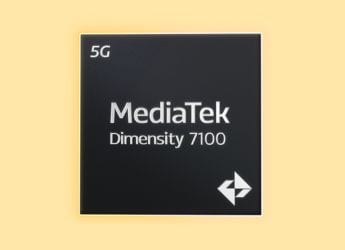- Home
- Science
- Science News
- New Trickle Down Method Developed to 'Grow' Graphene
New Trickle-Down Method Developed to 'Grow' Graphene

By making carbon leak (trickle down) through cracks on copper, researchers have developed a new process for 'growing' graphene directly on materials used for nano-scale electronic applications, thereby opening the way to produce high-performance electronic devices.
This versatile process, developed by a team of chemical engineers led by Vikas Berry at the University of Illinois at Chicago (UIC) in the US, enables graphene to be economically grown on almost any semiconducting or dielectric substrate of relevance to the electronic industry, the researchers claim.
They have reported this new method in the journal ACS Applied Materials and Interfaces of the American Chemical Society and have obtained two US patents.
"This method can be a game-changer for applications of the wonder material graphene," Sanjay Behura, research assistant professor at UIC and one of the authors, told IANS in an email.
Discovered in 2004, graphene is a sheet of a single layer of carbon atoms, arranged in a two-dimensional honeycomb lattice.
Due to the ultrafast mobility of its charge carriers, graphene has shown promise in nano-electronics, opto-electronics, and photonics. It also possesses a plethora of extraordinary mechanical and thermal properties that are still being exploited.
For nano-electronic device fabrications, it is essential to transfer the graphene - grown separately on metallic substrates - onto selected dielectric substrates.
Current techniques used in the transfer involve a contamination-prone process that introduces unwanted defects and impurities in graphene, making it unfavourable for high-performance nano and optoelectronic devices and industrial applications.
The researchers have overcome this problem by developing a process called 'Grain Boundary-Diffusion of Carbon Radicals' for growing high-quality graphene directly on the dielectric substrates, eliminating the need for the contamination-prone transfer process.
This 'direct' process involves dissociation of methane (carbon source) in a heated furnace in vacuum. The carbon radicals thus produced from methane dissociation diffuse (trickle) through the grain boundaries of polycrystalline copper thin film and crystallise into graphene at the interface of copper and silicon-based dielectric substrates.
This strategy of growing graphene directly on the substrates is suitable to produce large-scale graphene for industrial applications ranging from nanoscale electronics to energy conversion and opto-electronics, the authors report.
Other contributors of this work include Phong Nguyen from Air Liquide and Michael Seacrist from SunEdison Semiconductors.
Catch the latest from the Consumer Electronics Show on Gadgets 360, at our CES 2026 hub.
Related Stories
- Samsung Galaxy Unpacked 2025
- ChatGPT
- Redmi Note 14 Pro+
- iPhone 16
- Apple Vision Pro
- Oneplus 12
- OnePlus Nord CE 3 Lite 5G
- iPhone 13
- Xiaomi 14 Pro
- Oppo Find N3
- Tecno Spark Go (2023)
- Realme V30
- Best Phones Under 25000
- Samsung Galaxy S24 Series
- Cryptocurrency
- iQoo 12
- Samsung Galaxy S24 Ultra
- Giottus
- Samsung Galaxy Z Flip 5
- Apple 'Scary Fast'
- Housefull 5
- GoPro Hero 12 Black Review
- Invincible Season 2
- JioGlass
- HD Ready TV
- Laptop Under 50000
- Smartwatch Under 10000
- Latest Mobile Phones
- Compare Phones
- OPPO Reno 15 Pro Max
- Honor Win RT
- Honor Win
- Xiaomi 17 Ultra Leica Edition
- Xiaomi 17 Ultra
- Huawei Nova 15
- Huawei Nova 15 Pro
- Huawei Nova 15 Ultra
- Asus ProArt P16
- MacBook Pro 14-inch (M5, 2025)
- OPPO Pad Air 5
- Huawei MatePad 11.5 (2026)
- Xiaomi Watch 5
- Huawei Watch 10th Anniversary Edition
- Acerpure Nitro Z Series 100-inch QLED TV
- Samsung 43 Inch LED Ultra HD (4K) Smart TV (UA43UE81AFULXL)
- Asus ROG Ally
- Nintendo Switch Lite
- Haier 1.6 Ton 5 Star Inverter Split AC (HSU19G-MZAID5BN-INV)
- Haier 1.6 Ton 5 Star Inverter Split AC (HSU19G-MZAIM5BN-INV)

















